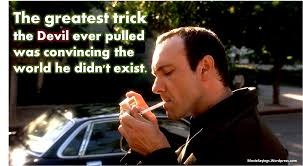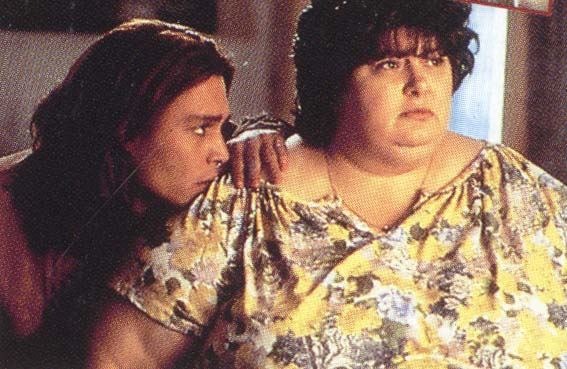The opening scene has it's best use for vanishing perspective. In the part of the movie where Dave is looking back out the window and you can see Jimmy and Shawn staring back him as he gets smaller and smaller. The camera follows the car from the rear showing the road going on endlessly. Dave in this scene is seen vulnerable because of his pleading eyes and the fact that the car is going so slow, which indicates he is slowly losing his childhood innocence. Dave as an adult for shadows his death. Before Kathy is killed we see Dave at the var watching Katy dance with her friends. later that night he comes home teary eyed and covered in someone else's blood. As the movie progresses he seems to relive what happened to him all over again affecting his judgement. At the end when Jimmy stabs Dave, after Dave falsely admitted that he had killed Kathy. As Dave is lying there bleeding all his sins and worries are bleeding out with him.
 In this scene of the movie Jimmy s seen wandering down the same street that Dave was taken from. The way the camera is angled tells the viewers that he too is on a never ending road. As Jimmy grows up, he becomes this tough guy who will show people what he is made of. when Jimmy was a little kid though he acted all in control and ready for anything. As soon as Dave was kidnapped he protected himself like he should have protected Dave all those years ago. At the end of the movie you can see Jimmy standing in the street where both Dave and him were robbed of their childhood. Shawn finds out in the end that Jimmy killed Dave. They are both sitting on the curb where they used to play hockey and out talking about Dave. When Shawn ask's if Jimmy has seen Dave, he replies that he hasn't seen Dave in years. What he really means though is that he hasn't seen the real Dave.
In this scene of the movie Jimmy s seen wandering down the same street that Dave was taken from. The way the camera is angled tells the viewers that he too is on a never ending road. As Jimmy grows up, he becomes this tough guy who will show people what he is made of. when Jimmy was a little kid though he acted all in control and ready for anything. As soon as Dave was kidnapped he protected himself like he should have protected Dave all those years ago. At the end of the movie you can see Jimmy standing in the street where both Dave and him were robbed of their childhood. Shawn finds out in the end that Jimmy killed Dave. They are both sitting on the curb where they used to play hockey and out talking about Dave. When Shawn ask's if Jimmy has seen Dave, he replies that he hasn't seen Dave in years. What he really means though is that he hasn't seen the real Dave.In conclusion, Jimmy and Dave shared one common thing throughout this entire movie. They both had a secret that eventually came out in the end. As Dave is dying he is releasing all the memories that had haunted him all these years. Jimmy is releasing all of his guilt and killing of Dave.
















